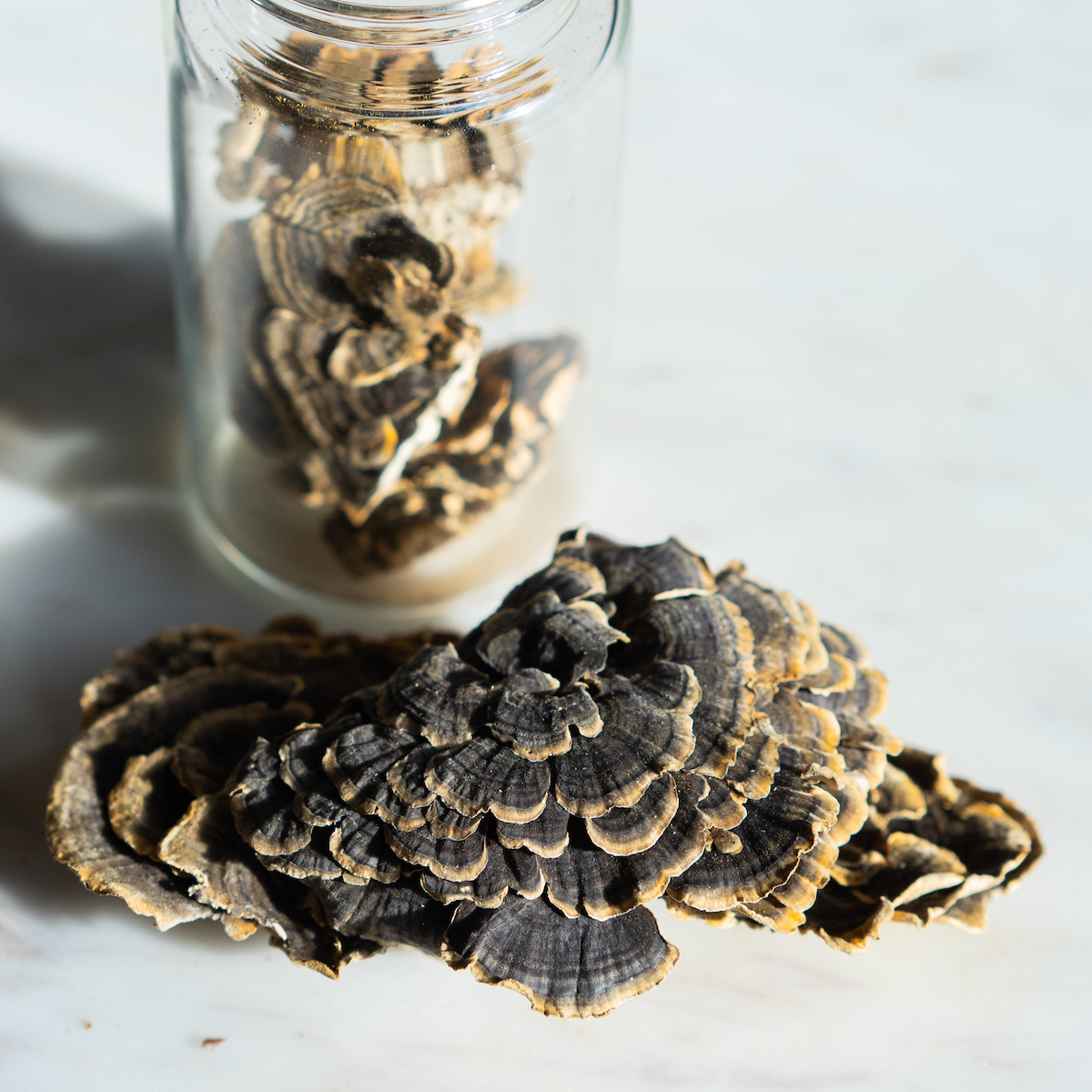
COMMON NAME (Chinese Name)
Turkey Tail (Yun Zhi)
BOTANICAL NAME
Trametes, Coriolus or Polyporus versicolor
USES
Turkey tail is a type of medicinal mushroom that has been used for thousands of years in Traditional Chinese Medicine to treat a variety of conditions. Often used to support the immune system, it has been shown to strengthen the immune system via modulating the immune response against pathological agents. It increases the production of protective proteins and defensive cells such as interferon-y, natural killer cells, macrophages, monocytes, etc., that inhibit inflammatory signaling pathways and fight against toxins. It has even been used in conjunction with chemotherapy to relieve symptoms and improve the quality of life. A separate study showed antitumor activity via boosting the immune response against tumors, suppressing its growth, inhibiting its metastasis, reducing its size, and reducing the risk of tumor complications.
It contains natural antioxidant agents and other constituents such as polysaccharide peptide (PSP), polysaccharide-K (PSK), triterpenoid, xylose, galactose, rhamnose, and arabinose fungi-sterol and organic acids. Turkey tail is a rich source of antioxidant agents that relieve oxidative stress, reduce free radicals, improve symptoms of neurodegenerative diseases, and prevent cellular damage and the development of chronic inflammation.
For a more common usage, Turkey Tail supports healthy digestion via modulating the gut microbiota and enhances gastrointestinal health. It acts as a prebiotic that nourish the helpful gut bacteria and improve metabolism and prevent the risk of intestinal complications such as diarrhea. Also, it may strengthen the immune system of the colon and prevent the risk of colorectal cancer.
Medical research studies reported that the turkey tail acts as an anti-inflammatory agent and improves the symptoms of diabetes and cardiovascular dysfunctions. It may also combat human papillomavirus and inhibit the growth of bacteria, including S. Aureus and S. Enterica, which causes severe infections.
Other health benefits reported in animal studies include that it improves physical performance, relieves fatigue, and increases energy production.
In Chinese Medicine, it is considered sweet and neutral to cool and affects the Spleen, Kidney, Heart and Liver meridians.
PREPARATION & ADMINISTRATION
Turkey tail can be formulated for decoction or tea preparation and pills (capsule) intended for oral administration. To make Turkey tail tea, take dried turkey tail, chop it, and boil it in water for about a half hour. You can add flavor and other ingredients if needed or wanted. It dries quickly due to less moisture content, so making a tea is helpful as it has a longer storage life. Extracts of turkey tails containing PSP and PSK are also available as a supplement for oral intake.
PRECAUTIONS
Usually, it is safe when taken orally, however, some individuals may have side effects, including darkened nail pigmentation, nausea, vomiting, diarrhea, darkened stools, and hepatic problems. You should consult with a certified herbalist, physician or other qualified healthcare professional before taking Turkey Tail.
REFERENCES

Comments (0)